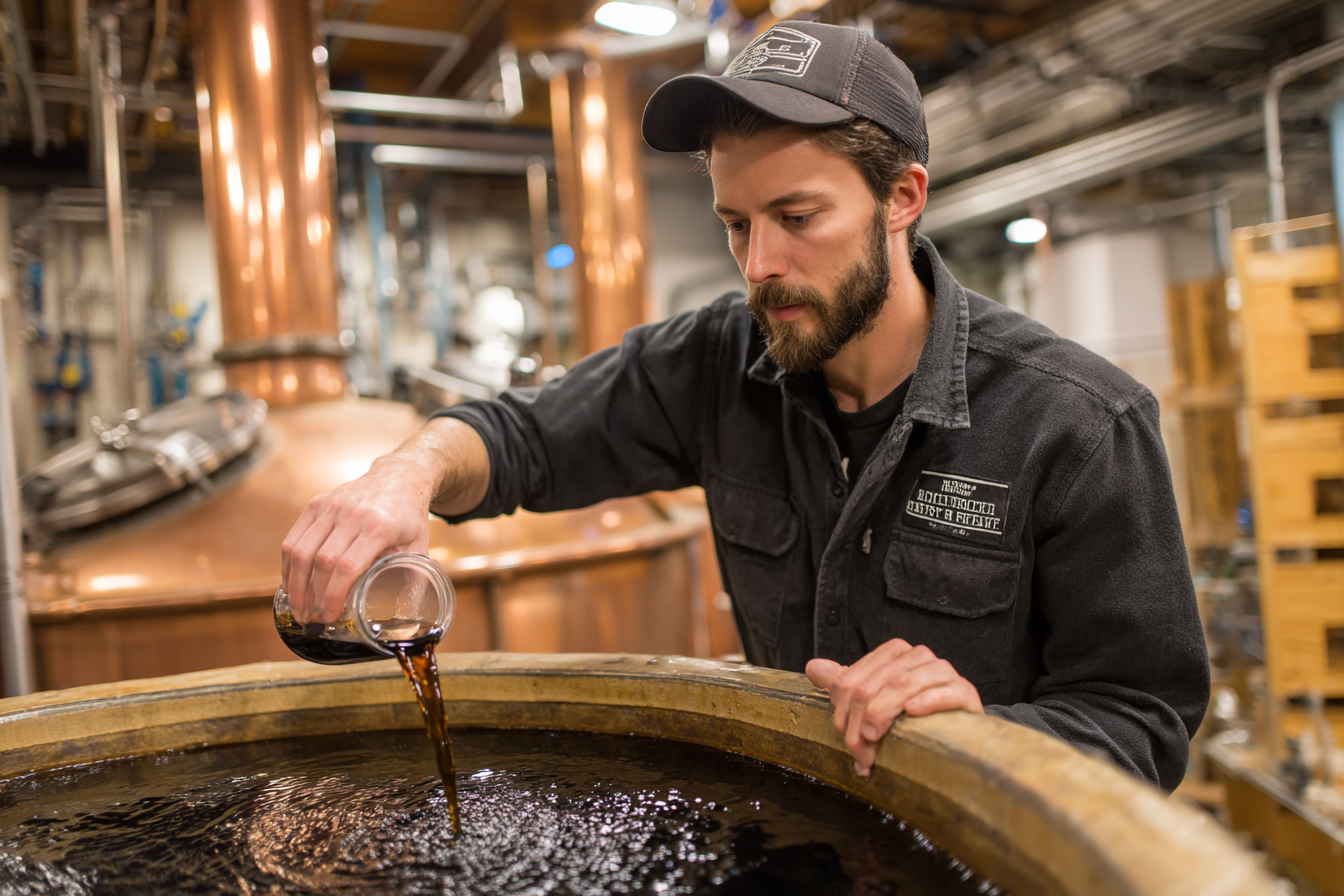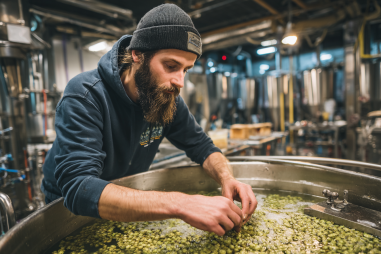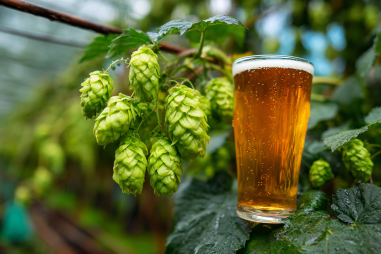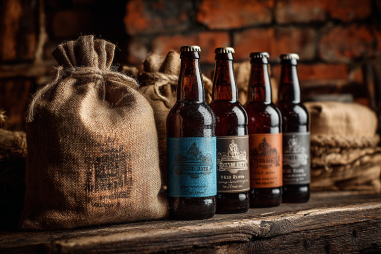American Porter is a beloved style among craft beer enthusiasts, known for its rich malt complexity balanced by moderate hop presence and a smooth finish. Brewing an American Porter offers a rewarding experience for homebrewers and seasoned professionals alike, combining traditional techniques with modern twists to create a robust dark ale. Whether you’re new to brewing or looking to refine your process, understanding each step of the American Porter brewing journey will help you craft a flavorful and satisfying beer.
Selecting Appropriate Malts and Grains
The foundation of any great American Porter starts with the malts and grains you select. Porters are defined by their malt-forward character, so choosing the right combination of specialty malts is critical. Typically, a base malt like 2-row pale malt forms the bulk of the grain bill, providing the fermentable sugars and a clean malt backbone.
For the distinctive dark color and roasted flavors, specialty malts play a starring role. Consider incorporating the following:
- Chocolate malt: Adds rich cocoa notes and deep brown color.
- Caramel malts (Crystal 60L-80L): Introduces sweetness, caramel, and toffee flavors.
- Victory malt or Biscuit malt: Imparts biscuity and nutty aromas.
- Black Patent or Roasted Barley: Provides roasted, slightly bitter flavors, and darkens the beer.
The balance between these malts determines the porter’s body, color, and flavor complexity. Avoiding overpowering roasted grains is key to preserving the smoothness that differentiates an American Porter from a stout.
Choosing Hops and Yeast Strains
American Porters traditionally feature a more assertive hop profile compared to English versions, often highlighting American hop varieties for their citrusy, piney, or floral characteristics. Popular hops include Cascade, Centennial, or Amarillo, which contribute both bitterness and aroma without overshadowing the malt character.
The hopping schedule typically involves adding hops during the boil for bitterness and in the late stages or whirlpool for aroma. Brewers often also dry-hop their porters to enhance hop aroma, though this is optional depending on your desired flavor profile.
Equally important is the yeast choice. An American ale yeast strain such as Wyeast 1056 or Safale US-05 is commonly used, producing a clean fermentation profile that allows malts and hops to shine. These yeast strains attenuate well, delivering a balanced mouthfeel and moderate alcohol content without introducing heavy esters that might compete with the malt complexity.
Mashing and Lautering Procedures Specific to Porter
Mashing is where the magic begins, as enzymes convert starches into fermentable sugars and create the wort’s flavor foundation. For American Porter, a single infusion mash between 148°F to 154°F (64°C to 68°C) is typical. Lower mash temperatures toward 148°F result in a fuller body and more residual sweetness, which complements the roasted flavors, while higher temperatures yield a drier finish.
Another tip is to incorporate a step mash or mash-out at around 170°F (77°C) to halt enzyme activity and improve wort extraction. This extra step can enhance the mouthfeel and ensure the malt complexity is maximized.
During lautering, gently sparge to avoid extracting harsh tannins from the grain husks. Collecting around 6.5 to 7 gallons of wort ensures enough volume for the boil without diluting flavors.
Boiling and Hopping Schedules
The boil serves multiple purposes: sterilizing the wort, concentrating flavors, and isomerizing hop alpha acids for bitterness. For an American Porter, the typical boil time is 60 minutes, with hop additions staggered to balance bitterness and aroma.
- Bittering hops: Added at the start of the boil to provide the backbone bitterness, usually aiming for 25-40 IBUs depending on your recipe.
- Flavor hops: Added around 15-20 minutes before the end to contribute layered hop flavors.
- Aroma hops: Added in the last 5 minutes or at flameout for fresh, fragrant hop character.
After the boil, quickly chilling the wort to yeast pitching temperature is critical to prevent contamination and preserve hop aroma.
Fermentation and Conditioning Tips
Once chilled, pitch your yeast into the wort, ideally at a temperature range of 65-70°F (18-21°C). Maintaining consistent fermentation temperature encourages clean yeast activity and optimal flavor development. Fermentation usually completes in 7 to 10 days, indicated by stabilized gravity readings.
After primary fermentation, conditioning or secondary fermentation can improve clarity and flavor maturation. Many brewers opt for conditioning at slightly cooler temperatures (around 60°F or 15°C) for 1-2 weeks to allow harsh flavors to mellow and flavors to meld.
Additionally, adding a small amount of priming sugar before bottling will carbonate your porter naturally, enhancing the mouthfeel and drinkability of the finished beer.
Bottling and Serving Recommendations
When bottling your American Porter, ensure complete sanitation to avoid contamination. Transfer the beer to a bottling bucket, mix in priming sugar gently, and fill bottles leaving a small headspace to accommodate carbonation. Cap the bottles securely and store them at room temperature for 2-3 weeks to carbonate fully.
Serve your American Porter slightly chilled, ideally between 50-55°F (10-13°C), to allow the complex malt flavors and hop aromas to fully express themselves. Use a tulip or nonic pint glass to concentrate aromas and showcase the dark ruby to brown color of the beer.
Common Troubleshooting in Brewing American Porter
Though American Porter is a forgiving style, brewers occasionally encounter issues. Here are some common challenges and solutions:
- Off-flavors (diacetyl, sulfur): Usually due to incomplete fermentation or stressed yeast. Ensure proper yeast pitching rates and fermentation temperatures.
- Excessive roast bitterness: Overuse of black patent malt or burnt grains can introduce harshness. Adjust specialty malt quantities and mash temperatures.
- Thin body or watery mouthfeel: Mash at lower temperatures for more residual sugars and consider adding specialty malts like crystal malt.
- Flat beer: Check priming sugar amounts and bottle storage conditions to ensure proper carbonation.
Using quality ingredients, precise measurements, and patience during each phase greatly reduces these issues and results in a well-balanced, delicious porter.
Crafting Your Perfect American Porter
Mastering the American Porter brewing process opens up numerous possibilities for experimentation and personalization. By thoughtfully selecting malts, hops, and yeast, carefully managing mash and fermentation temperatures, and attentively following brewing procedures, you can consistently produce a dark ale brimming with flavor and character.
Embrace the process with a balance of science and creativity, and you’ll soon enjoy the fruits of your labor: a rich, smooth American Porter that reflects your passion and skill in brewing.







